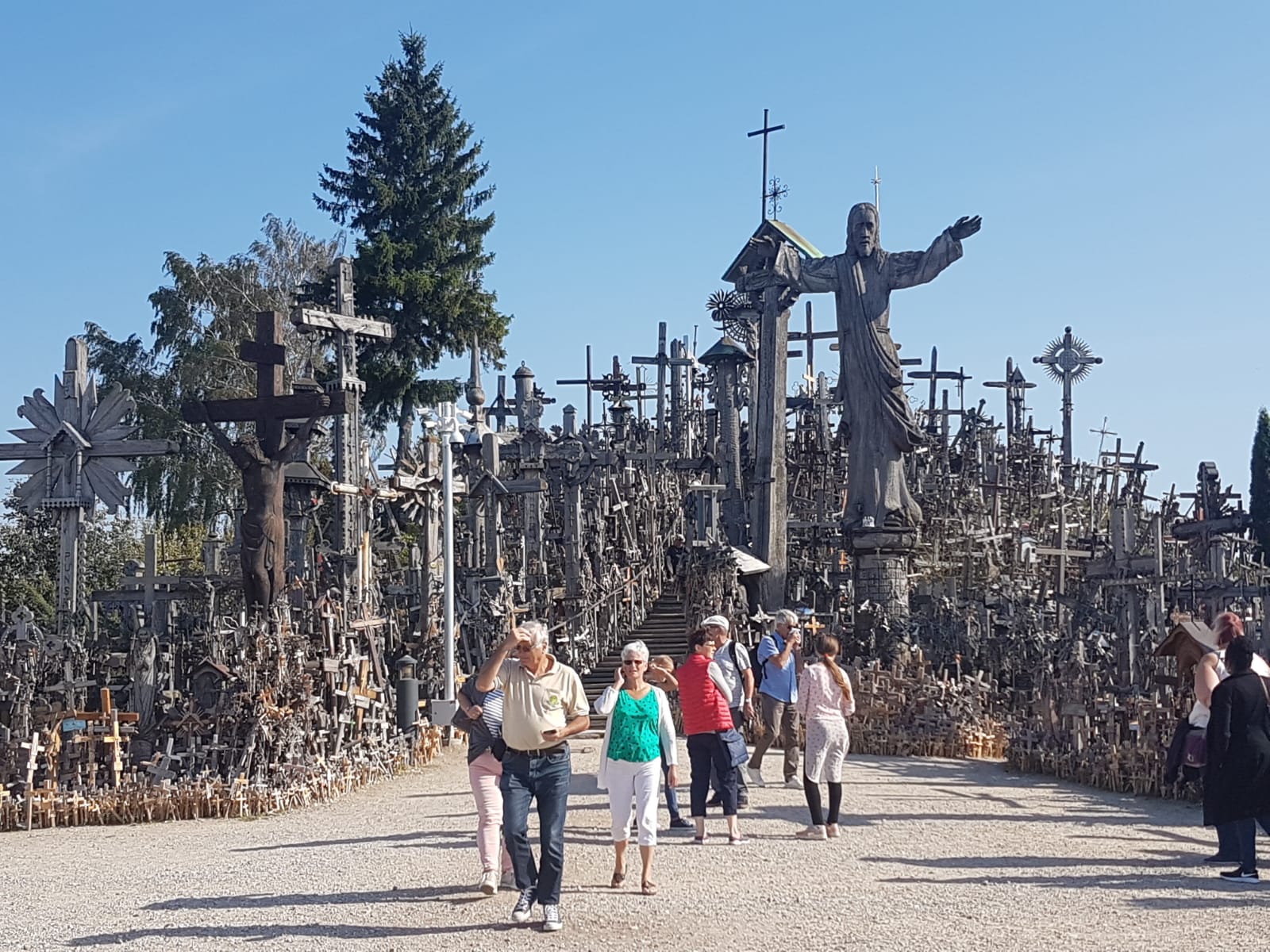To be called a «hill» in Lithuania, it needs to be just a few feet tall, since the landscape, woods and meadows are flat as far as the eye can see. The location of the Hill of the Crosses is not far from the northern Lithuanian city of Siauliai. Someone traveling to Lithuania that wants to understand the country, cannot miss going to the Hill of Crosses.
And indeed «many people, many pilgrims, come here from all over the world, including from Poland, Spain, Italy, and even from Asia. They come here to experience the holiness of the place,» says Father Andrius Dobrovolska, a priest involved in its history since the visit of Pope St. John Paul II.
Today, the crosses piled on this little hill, they say, are about 100,000, even if they are unable to count those that had been removed numerous times during Communism and then replaced, little by little, time and time again.
 Numbers aside, it is the story that counts, even if the beginnings are rather obscure. Perhaps a votive offering for a miraculous recovery was the first ‘cross’ planted here. Soon the crosses became tens, hundreds, until, after the end of the Second World War, when Lithuania fell under atheistic Soviet Communist control.
Numbers aside, it is the story that counts, even if the beginnings are rather obscure. Perhaps a votive offering for a miraculous recovery was the first ‘cross’ planted here. Soon the crosses became tens, hundreds, until, after the end of the Second World War, when Lithuania fell under atheistic Soviet Communist control.
«The Hill of Crosses is from one point of view a holy place, and on the other, a symbolic place, representing the struggle of the Lithuanians during the Communist period, to keep their faith alive. It became a kind of battlefield because the Communists were constantly trying to destroy it, to break down the crosses, but the people put them back at night. That’s why it’s a symbol of the struggle for independence.»
At least four times, when under Communism, the Communists removed all the crosses, but each time after, there was a new flowering of crosses. The people were not deterred. When the long-awaited independence brought with it religious freedom, the Polish Pope John Paul II decided that such a tenacious faith deserved the Pope’s homage, with a historic visit in September 1993; and the photos of the Polish Pope walking among those thousands of crosses have made the story of that visit extraordinary.
«John Paul II came here, he celebrated Mass, it was autumn like now, but it was very cold, so he thought it would be nice to have a place for the pilgrims, so that they would have some shelter, even in the case of cold, rain …» recalled Father Andrius.
Hence the request to the Franciscans, to build the convent which now stands next to the hill, where Father Andrius lives together with two other Franciscans, who are busy welcoming hundreds of visitors every day. The story tells that the idea of the convent came to the traveler Pope just a week later, visiting the Sanctuary of La Verna, in Italy.
«The stigmata are the symbol of the cross,» Father Andrius explains, «so St. John Paul II clearly thought that there was a relationship between these two places, because this is the hill of crosses, and La Verna as it is known is the place where St. Francis received the stigmata.»
With the passing of years, other improvements were made, like parking lots, toilets, souvenir shops; now, all tourist guides recommend a visit here. Among other things, with many of the crosses being artistically of value, the Hill is also a UNESCO World Heritage Site. However, its true value will always lie in what it means to the faith and appreciation for religious freedom in Lithuania.


LITHUANIAN SPECIAL: The Hill of Crosses: Not Only Holy Place, But Symbolized Struggle to Keep the Faith Alive When Was Under Communism
Regardless of Communism’s Repeatingly Destroying Site When in Control, Faithful Brought It Back to Life


